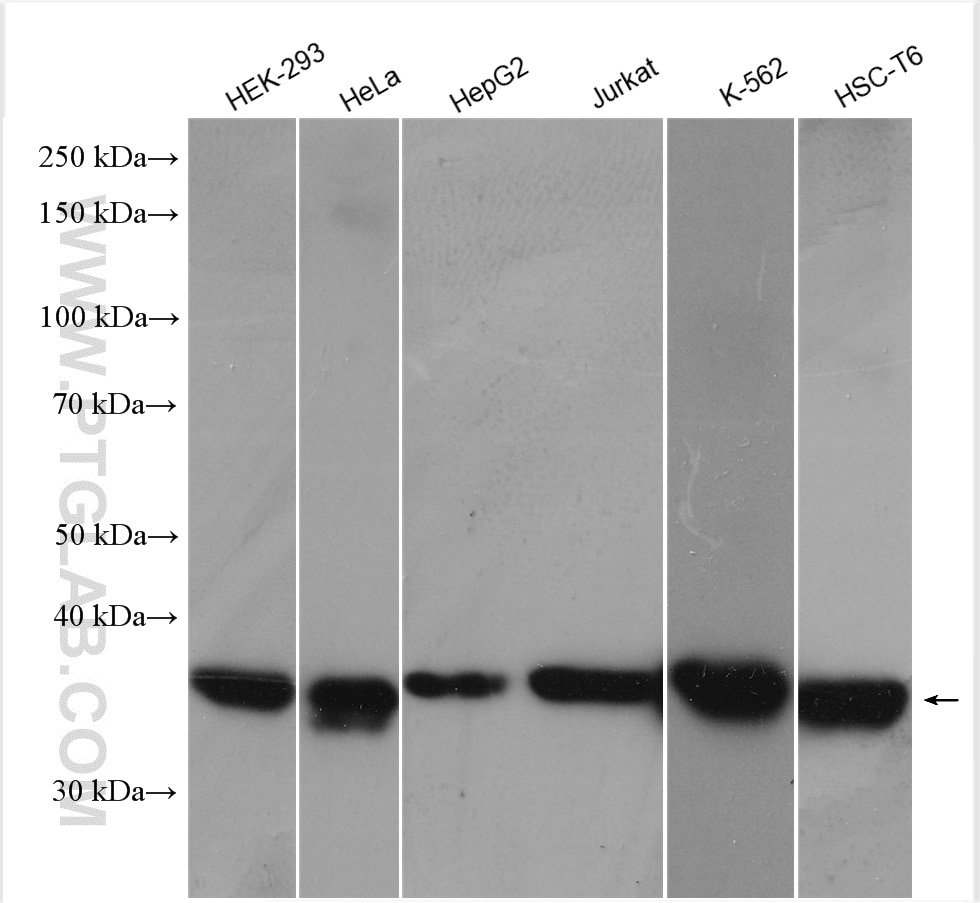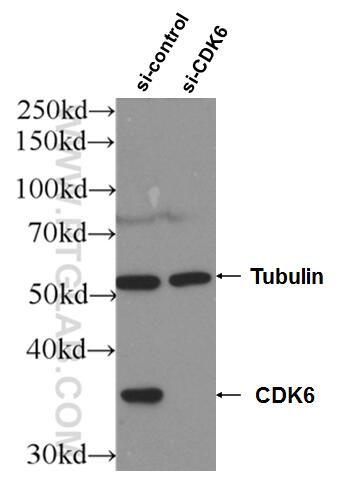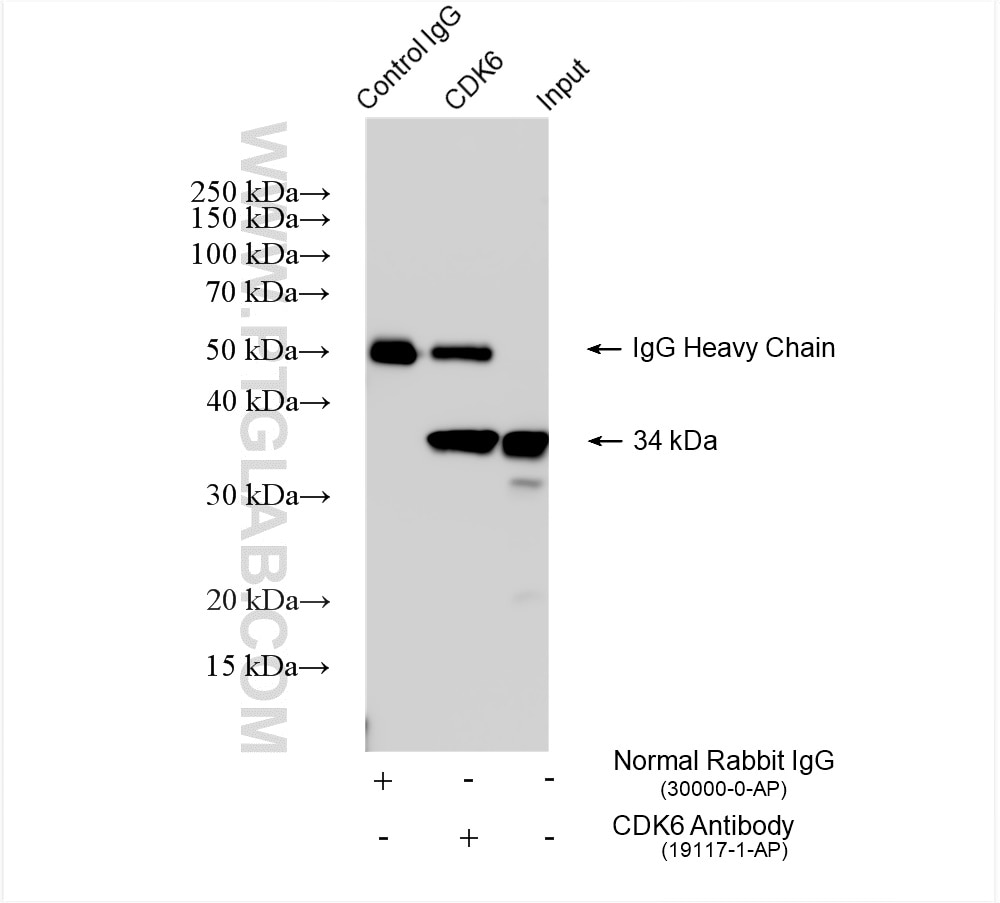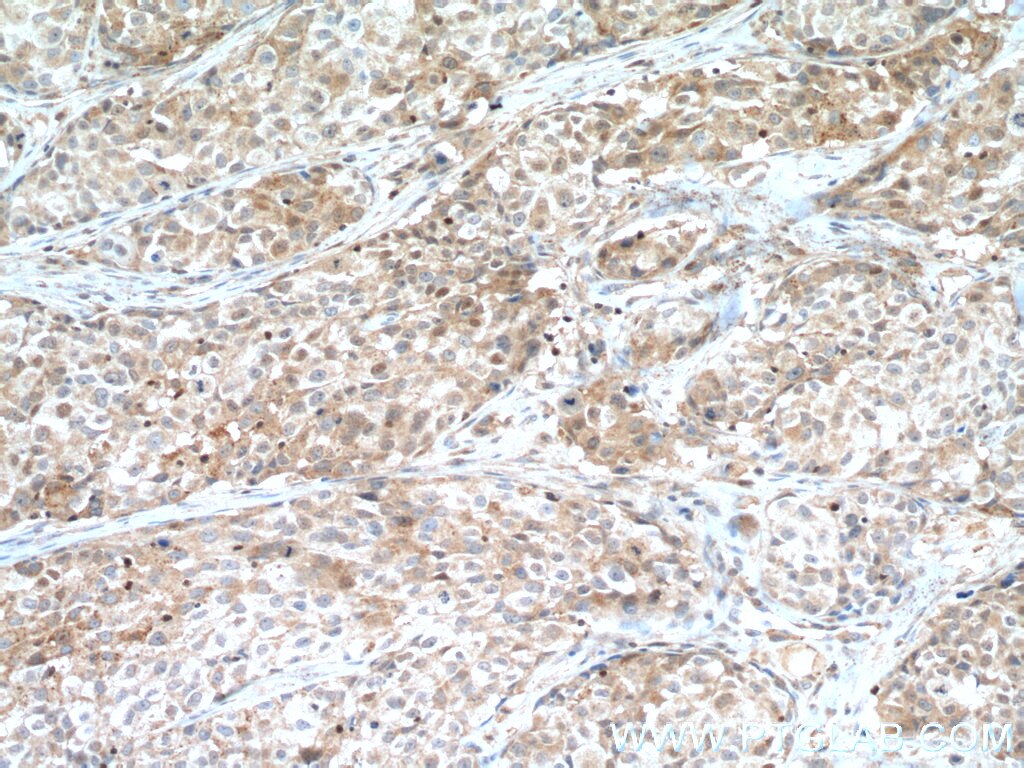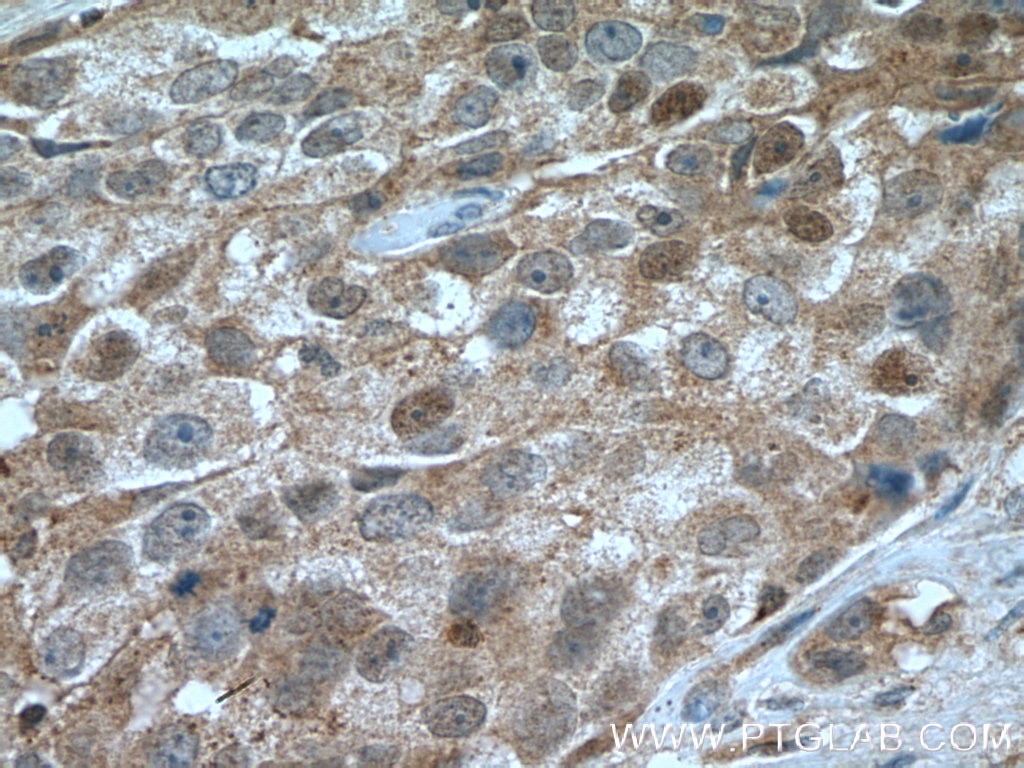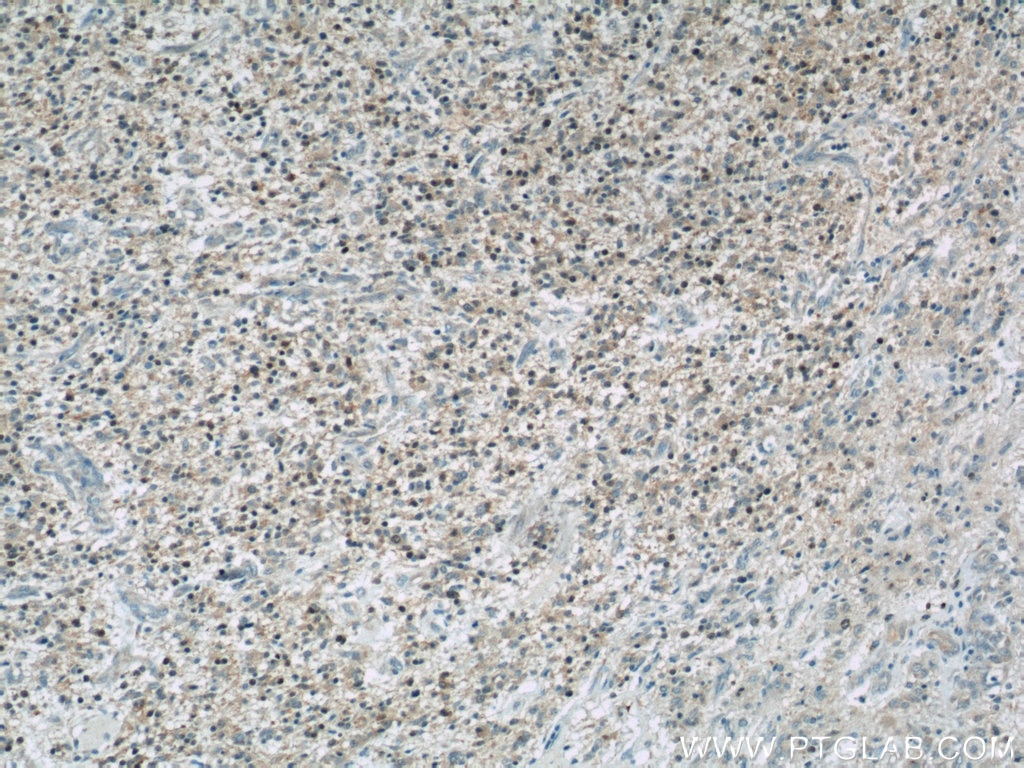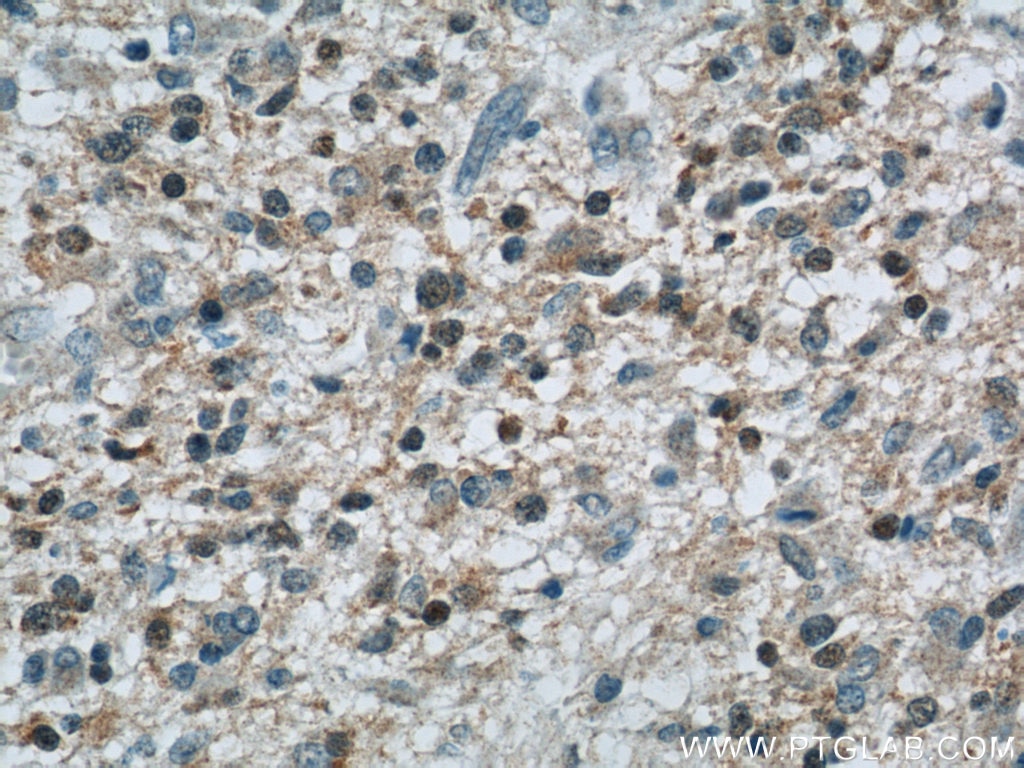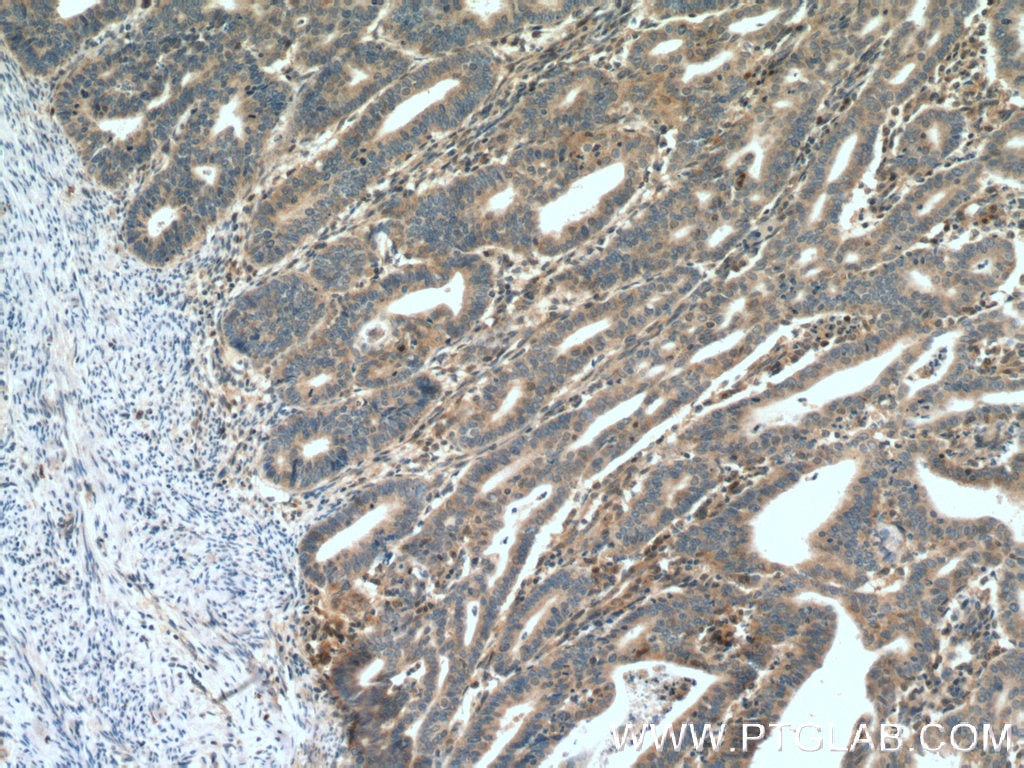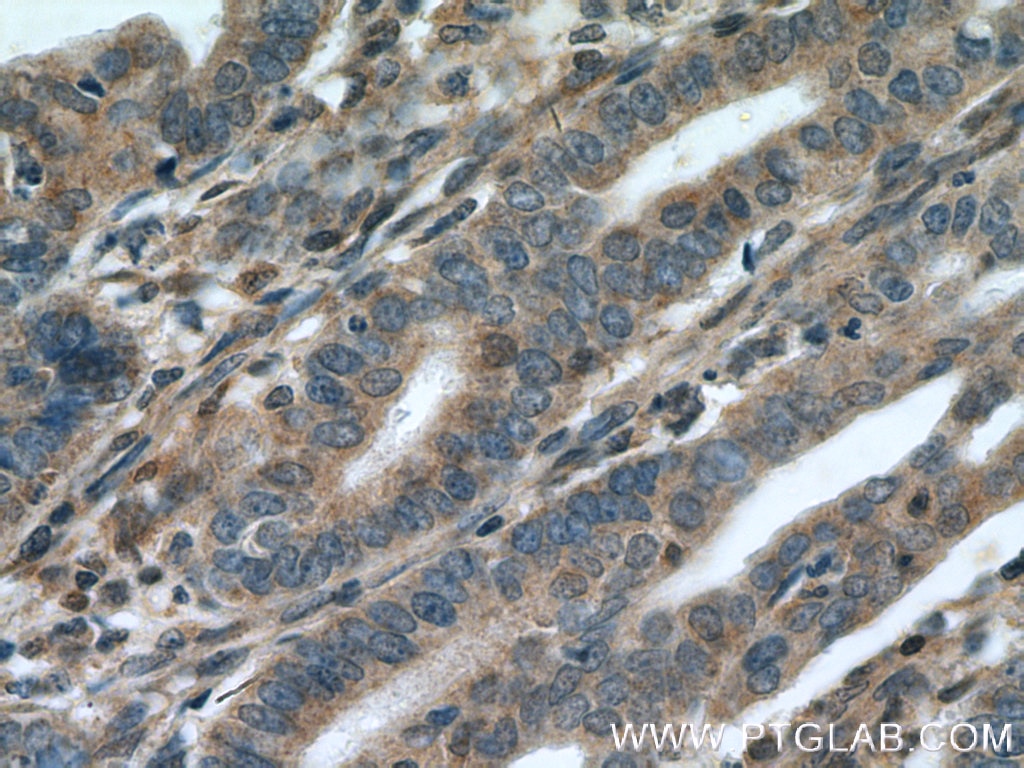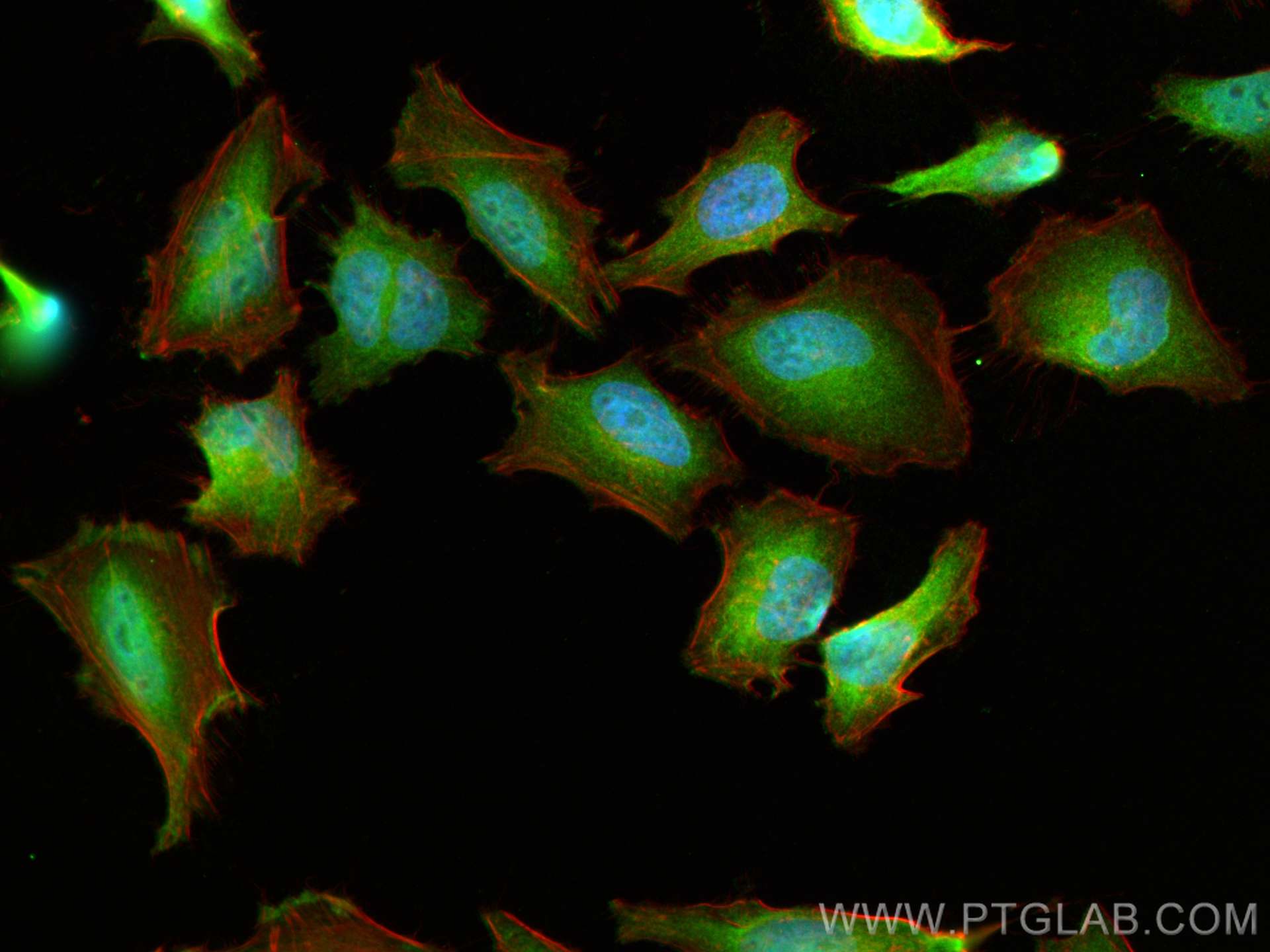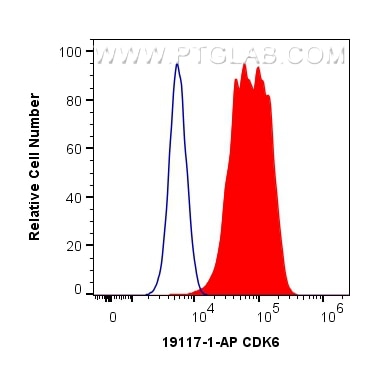- Phare
- Validé par KD/KO
Anticorps Polyclonal de lapin anti-CDK6
CDK6 Polyclonal Antibody for WB, IHC, IF/ICC, FC (Intra), IP, ELISA
Hôte / Isotype
Lapin / IgG
Réactivité testée
Humain, rat, souris
Applications
WB, IHC, IF/ICC, FC (Intra), IP, ELISA
Conjugaison
Non conjugué
N° de cat : 19117-1-AP
Synonymes
Galerie de données de validation
Applications testées
| Résultats positifs en WB | cellules HEK-293, cellules HeLa, cellules HepG2, cellules HSC-T6, cellules Jurkat, cellules K-562 |
| Résultats positifs en IP | cellules Jurkat, |
| Résultats positifs en IHC | tissu de cancer du poumon humain, tissu de cancer de l'endomètre humain, tissu de gliome humain il est suggéré de démasquer l'antigène avec un tampon de TE buffer pH 9.0; (*) À défaut, 'le démasquage de l'antigène peut être 'effectué avec un tampon citrate pH 6,0. |
| Résultats positifs en IF/ICC | cellules HeLa, |
| Résultats positifs en FC (Intra) | cellules HeLa, |
Dilution recommandée
| Application | Dilution |
|---|---|
| Western Blot (WB) | WB : 1:1000-1:4000 |
| Immunoprécipitation (IP) | IP : 0.5-4.0 ug for 1.0-3.0 mg of total protein lysate |
| Immunohistochimie (IHC) | IHC : 1:50-1:500 |
| Immunofluorescence (IF)/ICC | IF/ICC : 1:200-1:800 |
| Flow Cytometry (FC) (INTRA) | FC (INTRA) : 0.40 ug per 10^6 cells in a 100 µl suspension |
| It is recommended that this reagent should be titrated in each testing system to obtain optimal results. | |
| Sample-dependent, check data in validation data gallery | |
Applications publiées
| WB | See 15 publications below |
Informations sur le produit
19117-1-AP cible CDK6 dans les applications de WB, IHC, IF/ICC, FC (Intra), IP, ELISA et montre une réactivité avec des échantillons Humain, rat, souris
| Réactivité | Humain, rat, souris |
| Réactivité citée | rat, Humain, souris |
| Hôte / Isotype | Lapin / IgG |
| Clonalité | Polyclonal |
| Type | Anticorps |
| Immunogène | CDK6 Protéine recombinante Ag5600 |
| Nom complet | cyclin-dependent kinase 6 |
| Masse moléculaire calculée | 326 aa, 36 kDa |
| Poids moléculaire observé | 36-40 kDa |
| Numéro d’acquisition GenBank | BC027989 |
| Symbole du gène | CDK6 |
| Identification du gène (NCBI) | 1021 |
| Conjugaison | Non conjugué |
| Forme | Liquide |
| Méthode de purification | Purification par affinité contre l'antigène |
| Tampon de stockage | PBS avec azoture de sodium à 0,02 % et glycérol à 50 % pH 7,3 |
| Conditions de stockage | Stocker à -20°C. Stable pendant un an après l'expédition. L'aliquotage n'est pas nécessaire pour le stockage à -20oC Les 20ul contiennent 0,1% de BSA. |
Informations générales
CDK6(Cyclin-dependent kinase 6) is involved in initiation and maintenance of cell cycle exit during cell differentiation and it prevents cell proliferation and regulates negatively cell differentiation, but is required for the proliferation of specific cell types.The molecular weight of CDK6 is 36-40 KDa (PMID: 23563707, 8114739).
Protocole
| Product Specific Protocols | |
|---|---|
| WB protocol for CDK6 antibody 19117-1-AP | Download protocol |
| IHC protocol for CDK6 antibody 19117-1-AP | Download protocol |
| IF protocol for CDK6 antibody 19117-1-AP | Download protocol |
| IP protocol for CDK6 antibody 19117-1-AP | Download protocol |
| Standard Protocols | |
|---|---|
| Click here to view our Standard Protocols |
Publications
| Species | Application | Title |
|---|---|---|
Theranostics Estrogen-induced circRNA, circPGR, functions as a ceRNA to promote estrogen receptor-positive breast cancer cell growth by regulating cell cycle-related genes. | ||
Cancers (Basel) A Patient-Derived Xenograft Model of Dedifferentiated Endometrial Carcinoma: A Proof-of-Concept Study for the Identification of New Molecularly Informed Treatment Approaches. | ||
Oncotarget High expression of N-myc (and STAT) interactor predicts poor prognosis and promotes tumor growth in human glioblastoma. | ||
Front Pharmacol Oxymatrine Inhibits Renal Cell Carcinoma Progression by Suppressing β-Catenin Expression. | ||
Cancer Biother Radiopharm γ-Glutamylcyclotransferase Knockdown Inhibits Growth of Lung Cancer Cells Through G0/G1 Phase Arrest. | ||
Cancer Med δ-Catenin regulates proliferation and apoptosis in renal cell carcinoma via promoting β-catenin nuclear localization and activating its downstream target genes. |
